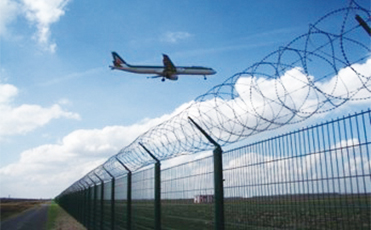metal wires
10 月 . 20, 2024 04:15
The Significance and Applications of Metal Wires
Metal wires are ubiquitous in our modern world, serving as critical components in a vast array of applications. These slender strands, typically made from conductive metals such as copper, aluminum, gold, and silver, play an essential role in electrical wiring, telecommunications, construction, and even jewelry. This article explores the significance of metal wires, their various applications, and the technological advancements that continue to shape their use in contemporary society.
The Importance of Metal Wires in Electrical Applications
One of the primary uses of metal wires is in electrical applications. The conductivity of metals like copper makes them ideal for carrying electric current, which is essential for powering homes, businesses, and infrastructure. Copper wires, in particular, are favored due to their excellent conductivity and flexibility. They are used in power transmission lines, electrical outlets, and virtually every electronic device we use today. With the growing demand for renewable energy sources, metal wires are also vital in connecting solar panels and wind turbines to the power grid, ensuring efficient energy distribution.
Telecommunications A Lifeline of Connectivity
In the world of telecommunications, metal wires form the backbone of communication networks. Copper wires have traditionally been used in telephone lines, providing the means for voice communication across vast distances. Although fiber optic technology is now favored for high-speed data transmission, metal wires still play a significant role in broadband services and local networks. Innovations, such as coaxial cables and twisted pair wires, leverage the properties of metal to enhance data transfer rates and reduce interference, enabling seamless connectivity in our increasingly digital society.
Construction and Structural Applications
metal wires

Beyond electrical and telecommunications uses, metal wires are integral to the construction industry
. Steel wire, for instance, is commonly employed in reinforced concrete, adding tensile strength to structures such as bridges, skyscrapers, and highways. Wire mesh and rebar are fundamental components that ensure durability and stability, addressing the challenges posed by natural elements and significant loads. Additionally, metal wires are utilized in various architectural features, including fencing, scaffolding, and wire rope systems. Their ability to withstand tension and compression makes them indispensable in modern engineering.Decorative and Creative Uses
Metal wires have also found a niche in the world of arts and crafts. From jewelry design to sculpture, artisans utilize metal wires for their malleability and aesthetic appeal. Precious metals like gold and silver are often shaped into intricate designs, allowing for the creation of unique pieces that reflect personal style and artistic vision. Moreover, wire art has gained popularity, with artists experimenting with various techniques to create stunning visual displays that captivate audiences. This blend of functionality and artistry showcases the versatility of metal wires beyond their traditional applications.
Advancements and Innovations
The future of metal wires is marked by continuous innovation. Research and development in metallurgy have led to the advent of new alloys and treatments that enhance the properties of metal wires, making them lighter, stronger, and more resistant to corrosion. Additionally, advancements in nanotechnology are paving the way for the development of wires with enhanced electrical properties, paving the way for faster and more efficient electronic devices. As industries evolve and the demand for sustainability grows, metal wires are being designed to meet eco-friendly standards, such as using recycled materials and energy-efficient manufacturing processes.
Conclusion
In conclusion, metal wires are essential to modern life, underpinning various sectors from electrical engineering to telecommunications and construction. Their versatility and reliability make them invaluable in our daily lives, while ongoing advancements promise to enhance their performance and efficiency. As technology continues to evolve, so too will the applications and significance of metal wires, ensuring they remain a foundational element of our interconnected world.




















